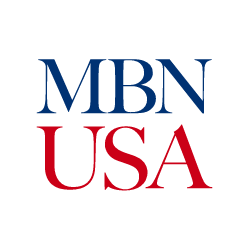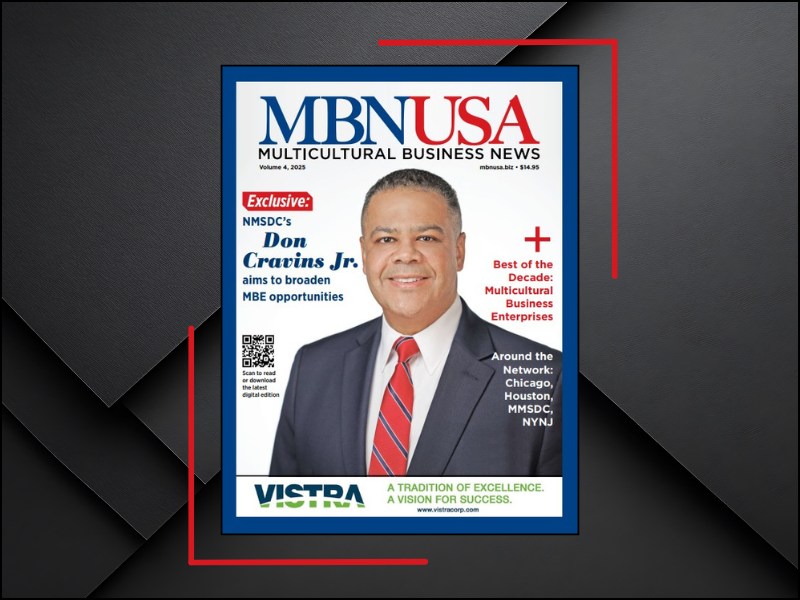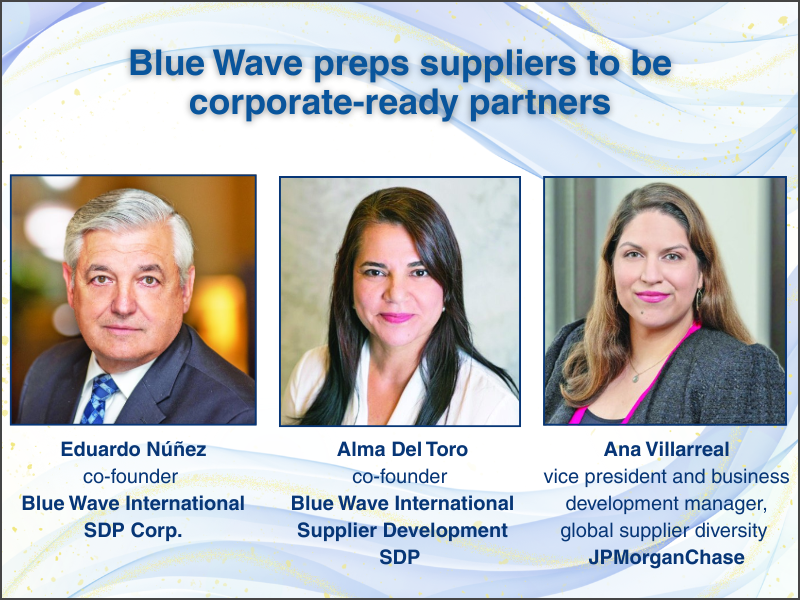What do John H. Johnson,
John D. Rockefeller, Reginald F. Lewis and Mark Zuckerberg have in common? Each
business titan used some form of lending to launch their iconic empires. More
than 38 years after Johnson became the first Black man on the Forbes 400, or
400 Richest Americans, list, U.S. Census Bureau information reveals Black
Americans are still rejected for credit at twice the rate of whites.
Credit is the lifeblood
of the American economy. Without capital, individuals and communities are
economically anemic. Wall Street stalwarts like JPMorgan Chase & Co. and
Wells Fargo & Co. are among several large financial entities that have
launched ambitious initiatives aimed at collectively injecting hundreds of
millions of dollars into Black-owned banks that are federally recognized as
minority depository institutions, or MDIs, and community development financial
institutions, or CDFIs. The financial giants are offering capital, deposits and
collaborative relationships.
“Our support of MDIs and
diverse-led CDFIs is focused on providing additional access to capital,
resources and mentorship to help these institutions grow, innovate and
positively impact our communities,” said Andrew T. Guida, managing director,
JPMorgan Chase commercial banking, which recently announced a $75 million
commitment to MDIs and CDFIs. “As a leader in financial services, the firm has
a responsibility to use our expertise to effect real change in our
communities.” According to the Federal Deposit Insurance Corp.’s first quarter,
the MDI listing highlights that Black-owned banks make up 20 of the 141
federally recognized MDIs. National Fair Housing
Alliance data unveils that
Black borrowers are 62.5% more likely to be offered higher-cost loans than
white borrowers — despite having similar credit ratings. Black-owned banks have
collectively provided funding to customers for nearly a century.
“We serve the
underbanked and underserved. We offer loans when others do not,” said Nicole A.
Elam, Esq., president and CEO of National Bankers Association, a trade
organization representing minority-owned banks. “An investment in Black-owned
banks is literally an investment in helping close the racial wealth gap.”
She encourages the
larger financial community to collaborate with MDIs to create mutually
beneficial opportunities that generate revenue. JPMorgan Chase addresses the
need through its Empowering Change program, a unique partnership that allows
MDIs and diverse-led CDFIs to offer a new money market fund share class to
institutional investors.
“Empowering Change
provides MDIs and CDFIs with new, recurring revenue and allows large companies
to invest with them,” Guida said. J.P. Morgan Asset Management will donate
12.5% of annual revenue from the management fees to further support community
development.
Google LLC anchored the
program’s launch with a $500 million investment in the unique asset.
“Google is committed to
helping create sustainable equity and economic opportunity for all,” said Juan
Rajlin, vice president and treasurer at Google. “We know that racial equality
is directly linked to economic opportunity and are proud to partner on the
Empowering Change program, which will help create new business opportunities
for minority institutions.”
Come one, come all
African American-owned OneUnited
Bank, based in Boston, Massachusetts, participates in the program.
Kevin Cohee, OneUnited’s
owner, chairman and CEO, said his bank leveraged acquisitions and technology to
expand service throughout the country. Banks like his, he said, are uniquely
qualified to help “corporations adopt social justice and help Black Americans
adopt financial literacy as core values.” Ultimately, he said, “Banks make
money from deposits.”
He added, “We already
serve clients like Biogen [Inc.], PayPal [Holdings Inc.] and others. We’d love
to service more deposits from corporate clients.”
Neighborhood
revitalization
With $1.9 trillion in
assets, Wells Fargo pledged to inject $50 million into African American MDIs
and CDFIs. It recently announced the fulfillment of its promise to infuse
millions of dollars in equity capital with nonvoting positions into 13
Black-owned MDIs. The financial services company invested in the following
institutions:
• Carver Federal Savings
Bank in New York, New York
• Carver State Bank in
Savannah, Georgia
• Citizens Trust Bank in
Atlanta, Georgia
• Citizens Savings Bank
& Trust Co. in Nashville, Tennessee
• City First Bank
(formerly Broadway Federal Bank) based in Los Angeles, California
• Commonwealth National
Bank in Mobile, Alabama
• First Independence
Bank in Detroit, Michigan
• The Harbor Bank of
Maryland in Baltimore, Maryland
• Industrial Bank in
Washington, D.C.
• Liberty Bank &
Trust Co. in New Orleans, Louisiana
• M&F Bank in
Durham, North Carolina
• Optus Bank Inc. in
Columbia, South Carolina
• Unity National Bank in
Houston, Texas
“Our industry is
stronger when we work together, shepherding resources for underserved
individuals and small businesses to create economic opportunities that will
strengthen the long-term success of communities,” said Jonathan Weiss, senior
executive vice president and CEO of corporate and investment banking at Wells
Fargo, during the initiative’s launch. “MDIs are a key part of the lending
ecosystem for underserved communities, playing an important role in
neighborhood revitalization, and we look forward to helping African American
MDIs grow, serve their communities and expand their sphere of influence by
providing capital, connections and expertise.”
Optus Bank — an MDI
founded by African Americans in Columbia, South Carolina, a century ago —
capitalized on the opportunity.
“The investment and
support from Wells Fargo will allow us to substantially increase our impact on
closing the racial wealth gap,” said Dominik Mjartan, president and CEO of
Optus Bank, a recipient of $3 million. “We are grateful and committed to
ensuring that this capital helps drive transformational wealth-building
opportunities for our communities and customers.”
JPMorgan Chase’s
commitment to Advancing Black Pathways
JPMorgan Chase’s
multipronged approach to effecting change includes its Advancing Black Pathways
wealth and career-readiness initiative and the JPMorgan Chase PolicyCenter. In
addition to that work, the $3.4 trillion multinational investment bank and
financial services holding company recently invested $60 million of its $75
million commitment in several Black-owned MDIs, including:
• Carver Federal Savings
Bank
• City First Bank
• Liberty Bank & Trust Co.
• M&F Bank
Carver Bancorp Inc., the
holding company for CFSB, received a $6 million long-term equity investment
from JPMorgan Chase, as well as an investment from Wells Fargo.
“Carver reinvests
approximately 80 cents of each dollar on deposit into the community through
programs that include access to capital, workforce development and financial
education programs,” said Michael T. Pugh, president, CEO and board member of
CFSB, one of the nation’s largest African and Caribbean American-managed banks,
with just under $700 million in assets.
“Since the start of our
fiscal year in April, we have provided more than $53 million in loans to
customers in our community,” he continued. “This effort would not have been
easily achieved without the support of partners like JPMorgan Chase, Wells
Fargo, Bank of America [Corp.] and other investors that have supported Carver’s
mission.”
Liberty Bank &
Trust, another dual Wells Fargo and JPMorgan Chase recipient, applauds the
investment initiatives’ potential to help marginalized communities build wealth.
“This infusion of
capital will allow us to scale up our efforts to support small businesses,
increase our mortgage lending and help refinance predatory lending products,
which will result in significant cash flow enhancements for our most challenged
communities,” said Alden J. McDonald Jr., president and CEO of New Orleans,
Louisiana-based Liberty Bank & Trust, the largest Black-owned bank, with
$765 million in assets.
These investment
initiatives aim to strengthen diverse-led financial institutions and generate a
multiplier effect that revitalizes communities and creates pathways to capital
for more people.
National Bankers
Association touts inclusion in financial service supply chain
Black Americans have
historically contended with economic disparities and higher unemployment rates
than their cultural counterparts. These factors impact the racial wealth gap.
Insights from the 2019
Survey of Consumer Finances revealed that the typical White family has eight
times the wealth of a typical Black family and five times the wealth of the
typical Hispanic family. According to Pew Research Center information, the impact
of the coronavirus disproportionately impacted Blacks and Hispanics more
severely than their White counterparts. The National Bankers Association and
the two-dozen minority-owned banks it serves are working to eliminate the
racial wealth gap.
“Minority banks have an
unprecedented opportunity to grow and level the economic playing field for
minorities and women. In this transformational era, we want to expand access to
capital to drive inclusive economic recovery and help NBA member banks better
leverage technology to achieve an economic multiplier effect,” said Nicole A.
Elam, NBA’s president and CEO.
A former vice president
at JPMorgan Chase & Co., she said Black-owned banks are stellar examples of
multigenerational business sustainability and success. “Black banks have a
proven track record of longevity and demonstrate proof of service,” Elam said.
She recommends potential
investors hire, support and invest in Black-owned banks to create mutual
prosperity.
• Hire Black banks:
“Make us a part of your financial service supply chain. Involve us in your
transactions that will create revenue and fee generation opportunities.”
• Support Black banks:
“You can financially support through grants and funds that support MDIs.”
• Invest in Black banks:
“Deposits are great. But we need capital through direct equity investments into
MDIs. Capital helps us create the 10-to-1 multiplier effect for our customers
and community.”
To learn more about how
NBA-member institutions are working to eliminate the racial wealth gap, visit
nationalbankers.org.
Four tips to help MDIs
attract investment from large financiers
As a managing director
in the Financial Institutions Groups for JPMorgan Chase & Co. Commercial
Banking, Andrew Guida has dedicated his career to serving U.S. banks. His team
is responsible for community and regional banks, thrifts and other financial
services clients throughout the country.
“There is no
one-size-fits-all approach to investing in [MDIs],” said the veteran commercial
banker.
Guida offered these four
tips that could help MDIs attract investments from larger financiers.
1. Drive community
impact: “MDIs play a vital role in assisting minority and underserved
communities. They are resources for improving the economic viability of our
communities. For example, MDIs make a sizable percentage of mortgages and
small-business loans to disadvantaged communities. The closer an MDI is to the
needs and pulse of its community, the better.”
2. Have stellar
management teams: “We’re investing in MDIs and community development financial
institutions because we’re impressed by the work they do every day to advance
our communities. Like any other investment, you must be confident in the
leadership team. The MDIs we’ve worked with to date all have forward-thinking
management teams dedicated to driving change in our communities.”
3. Have a track record of
success: “In general, MDIs are mission-driven banks that have been delivering
solutions to their communities for decades and producing economic
opportunities. We want to partner with those MDIs which have delivered on their
commitments over time, allowing them to gain the trust and respect in our
communities.”
4. Be creative and
flexible: “As smaller institutions, the management teams often play multiple
roles, requiring them to operate with flexibility and creativity to adjust to
their circumstances. Those qualities come in handy when working with a large institution
like JPMorgan Chase and when helping clients find the best and most effective
financial solutions.”


-240.jpg)

-982.jpg)
-497.jpg)
-746.jpg)

-404.jpg)



